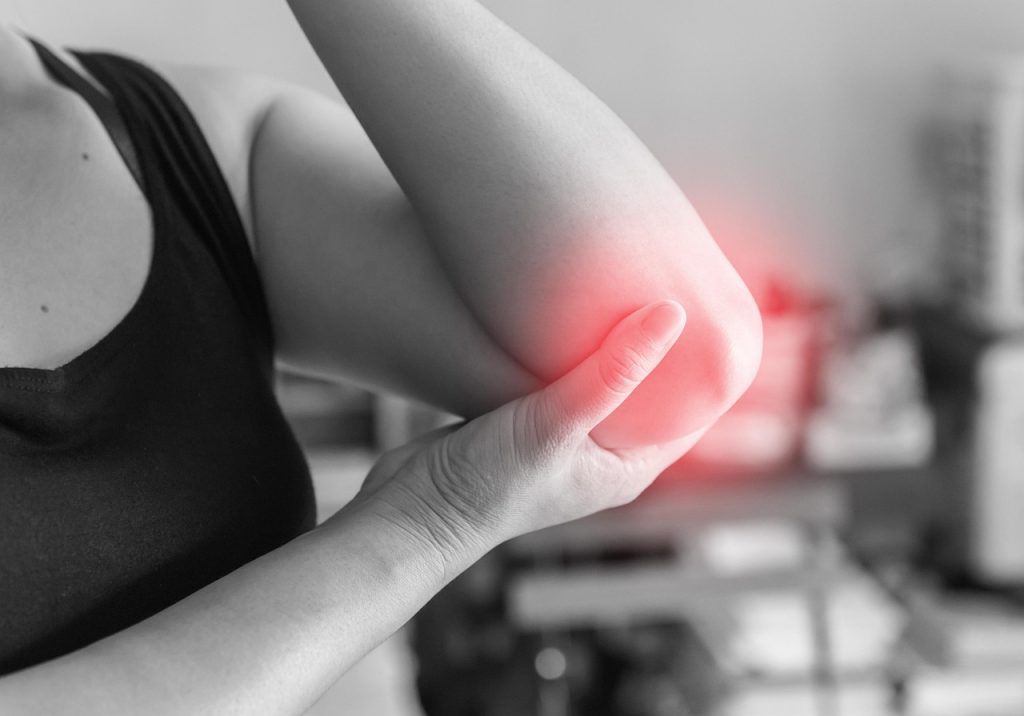Your cart is currently empty!
Tennis Elbow: How It Happens and How to Improve It

Tennis elbow, medically known as lateral epicondylitis, is a common condition that affects the outer part of the elbow, causing pain, weakness, and discomfort. Despite its name, tennis elbow isn’t just for athletes—it’s a condition that can affect anyone who engages in repetitive arm movements. However, it does affect many tennis players both on a community but also professional level. In this blog post, we’ll explore how tennis elbow happens and what you can do to improve it.
How Does Tennis Elbow Happen?
Tennis elbow occurs when the tendons in your forearm, specifically those attached to the outer part of the elbow (known as the lateral epicondyle), become irritated or inflamed. These tendons are responsible for extending the wrist and fingers, and when they experience repetitive stress, they can develop small tears and micro-damage. This leads to pain, swelling, and weakness.
Tennis elbow can affect anyone who performs repetitive activities that involve gripping, twisting, or lifting. Activities like painting, using tools, or even typing can contribute to the development of this condition. The repeated strain on the muscles and tendons causes them to become overworked and eventually injured, leading to inflammation and pain.
Symptoms of Tennis Elbow
The most obvious symptom of tennis elbow is pain on the outer side of the elbow. This pain may start gradually and worsen with activities involving the wrist and forearm, such as shaking hands, lifting objects, or using a computer mouse. Other symptoms include:
- Tenderness on the outer part of the elbow, especially when pressed.
- Weakness in the forearm, making gripping or holding objects difficult.
- Stiffness in the elbow joint, reducing range of motion.
- Pain radiating down the forearm, especially when extending the wrist.
If you’re experiencing any of these symptoms, it’s important to take action early to avoid the condition becoming chronic.
How to Improve Tennis Elbow
While tennis elbow can be frustrating, the good news is that most cases can be improved or even fully healed with proper care. Here’s how to manage and improve your condition:
1. Rest and Modify Activities
The first step in healing tennis elbow is to rest the affected arm. Avoid activities that aggravate the condition, such as tennis, lifting, or repetitive arm motions. Giving your tendons time to recover is crucial in preventing further damage.
2. Cold Therapy
Applying ice to the affected area can help reduce inflammation and relieve pain. Try icing the elbow for 15-20 minutes at a time, several times a day, particularly in the first few days after noticing pain. A cold pack, ice wrapped in a cloth, or even a bag of frozen peas can provide effective relief.
3. Physical Therapy
Once the initial pain subsides, physical therapy can play a key role in recovery. A physical therapist will guide you through specific exercises to:
- Strengthen the forearm muscles to support the tendons.
- Stretch the muscles to reduce tightness and improve flexibility.
- Perform eccentric exercises, which involve lengthening the muscle while it’s under tension, promoting tendon healing and strengthening.
4. Bracing or Splinting
A forearm brace or counterforce brace is often recommended to reduce strain on the affected tendons. This type of brace is worn around the forearm just below the elbow and helps distribute the load from the forearm muscles, easing pain and discomfort.
5. Ergonomics and Technique Adjustments
Prevention is key, especially if your tennis elbow is caused by repetitive activities. Learning the proper technique for sports like tennis can reduce the risk of future injury. In tennis, many people make the mistake of using their arm to hit versus their body. Investing in a few lessons to learn the proper technique can save you a lot of pain down the future.
Preventing Tennis Elbow in the Future
Once you’ve healed from tennis elbow, it’s important to take steps to prevent it from coming back:
- Warm-up properly before engaging in any physical activity
- Strengthen your forearms with exercises that target the wrist and forearm muscles
- Take breaks during repetitive activities to give your muscles and tendons a rest
- Use proper technique in sports and daily activities to reduce unnecessary strain on your elbow
Conclusion
Tennis elbow is a painful condition that can disrupt daily activities, but with the right treatment and prevention strategies, most people recover fully. By incorporating rest, physical therapy, ergonomic adjustments, and strengthening exercises, you can not only heal your tennis elbow but also prevent it from happening in the future.
Remember, if you’re experiencing persistent pain or symptoms, it’s always best to consult with a healthcare professional for proper diagnosis and treatment.
Tennis Clinics or Private Lessons?
As someone who entered the game late in life I get asked many times by newbies should they take tennis clinics or a private lesson if they want to learn how to play?
Better yet, subscribe to my newsletter so you don’t miss out on any new posts.
Leave a Reply